Vol-au-vents and 19 more retro favourites to cook at home
A taste of nostalgia

Pierre-Olivier/Shutterstock
While some dated dishes should stay firmly in the past (aspic, anyone?), there are plenty of retro recipes that are well overdue a comeback. From French favourite duck à l'orange to delightfully kitsch desserts like pineapple upside-down cake, we've compiled a collection of old-school recipes we'd love to see back on the menu – all of which are sure to stir up some happy memories.
Read on to discover our ranking of the tastiest retro recipes ever – counting down to the biggest classic of all.
20. Devilled eggs
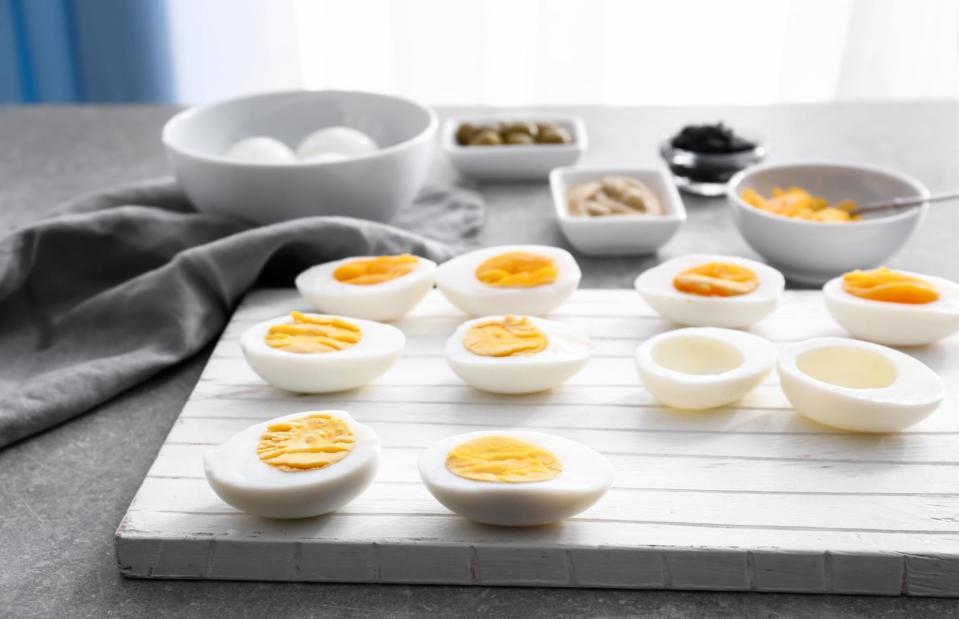
Pixel-Shot/Shutterstock
The term 'devilled' refers to the fact that these eggs are stuffed with a spicy filling, often made with mustard, paprika or curry powder. Admittedly, they're a little bit fiddly to make, but it's an easy process if you've got nimble fingers – and they're so worth the effort. To make them, the yolks are spooned out of hard-boiled eggs, then mashed up with mayonnaise, oil, Tabasco, mustard and a little water. The mixture is then piped back into the cavities where the yolks used to sit. You can add any seasonings, spices and herbs you like to make them your own, though a final flourish of chopped chives is traditional.
20. Devilled eggs
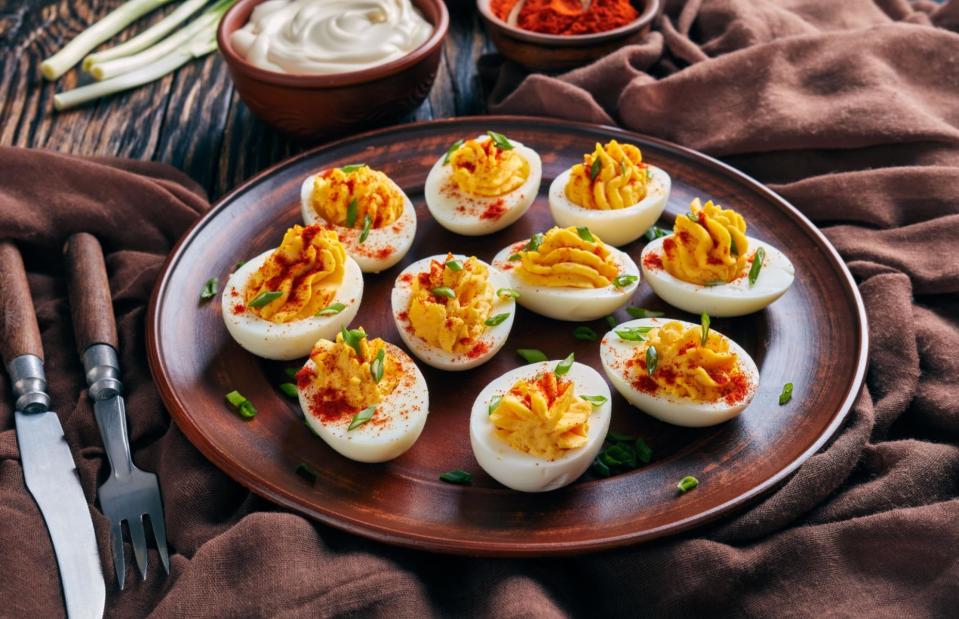
from my point of view/Shutterstock
Boil six eggs in simmering water for nine minutes, then plunge them into a bowl of iced water to stop them from overcooking. Once cold and peeled, slice the eggs in half lengthways, then scoop out the yolks into a large bowl using a teaspoon. Add 6 tbsp mayonnaise, 4 tbsp extra-virgin olive oil, a few shakes of Tabasco, a teaspoon or so of mustard (to taste) and the seasoning of your choice. Use a stick blender to whiz up the mixture until you have a smooth paste (if it still seems too thick to pipe, add a little boiling water). Then, using a piping bag with a star nozzle for that retro look, pipe the paste back into each cavity. Scatter your eggs with snipped chives to serve.
19. Chicken Marbella
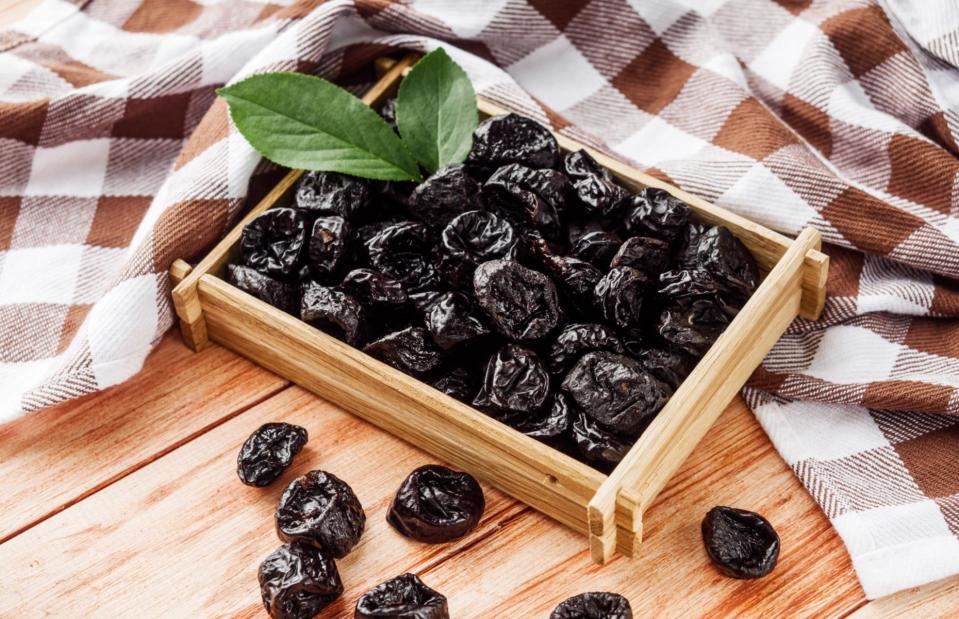
Narsil/Shutterstock
It may sound Spanish, but this fantastic chicken dish – which sees chicken marinated with olives, capers and prunes, then cooked in white wine – has roots in New York. It was first served back in 1977 at The Silver Palate deli, owned by Julee Ross and Shiela Lukins. To make it, start by preparing a marinade. Combine 4fl oz (125ml) each olive oil and red wine vinegar, 9oz (250g) pitted prunes, 4oz (125g) each pitted green olives and capers (with a little juice), six bay leaves, a head of garlic (cloves peeled and puréed), 2oz (60g) dried oregano, 2 tsp salt and 1/4 tsp black pepper.
19. Chicken Marbella
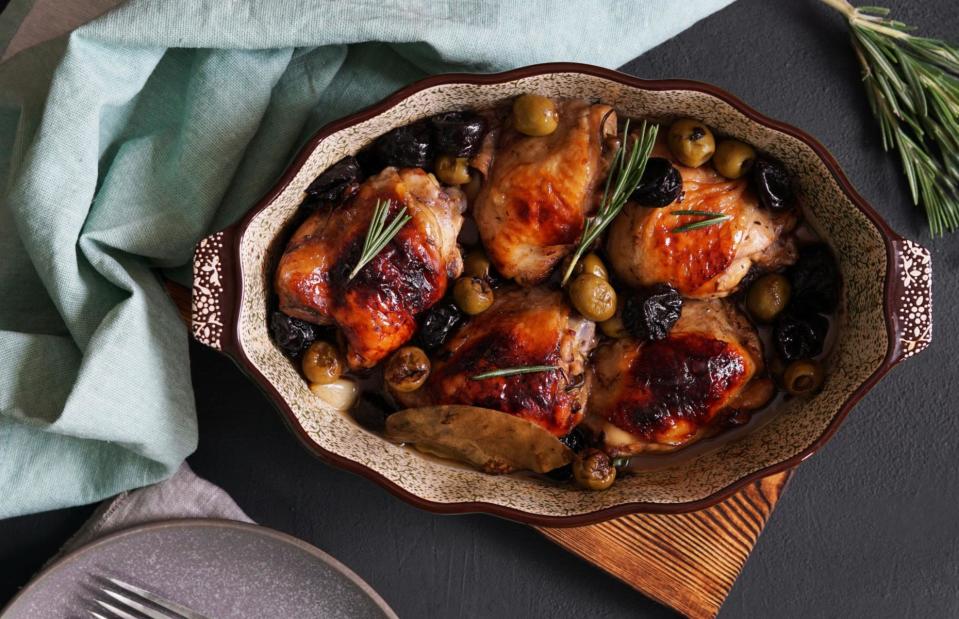
krolikova/Shutterstock
Add eight large chicken pieces to the marinade, coat them well, then leave them overnight in the fridge. When you're ready to cook, heat the oven to 180ºC/160ºC fan/350ºF/gas mark 4. Meanwhile, arrange the chicken pieces in a single layer in a baking dish, then spoon over the marinade. Sprinkle 9oz (250g) brown sugar over the top, then pour 8fl oz (250ml) white wine around the chicken. Bake for an hour, basting a few times. After 30 minutes, top the chicken with the prunes, olives and capers. Once the chicken is cooked, reduce the pan juices by half, then strain, add 2 tbsp chopped parsley, and pour over the chicken. Our recipe will serve eight.
18. Pijama

Halil ibrahim mescioglu/Shutterstock
If you love flan (or crème caramel), this retro Spanish dessert may be for you. It's said to have been invented at Barcelona’s Restaurant 7 Portes in the 1950s; it was improvised by the chef, inspired by the peach Melba, which American sailors had been requesting. It combines flan, ice cream, fruit in syrup and whipped cream for a dessert that has a little bit of everything. At first, its name was pijmelba, but it soon became known as pijama. This dessert could be made more complicated with the addition of homemade flan and ice cream – but why bother, when it’s so easy to throw some ready-made elements together?
18. Pijama

MercatalaPlanxa/Facebook
All you need is a ready-made mini flan to begin. Plate it, then add a couple of scoops of your favourite ice cream and some pieces of fruit in syrup from a tin. You can use peaches, pineapple slices, cherries – whatever you have to hand (or like best). For a little extra effort, whip your own cream instead of squirting it from a can. This dessert really couldn’t be easier, and you can make it different every time by switching up your fruits and ice cream flavours.
17. Banoffee pie
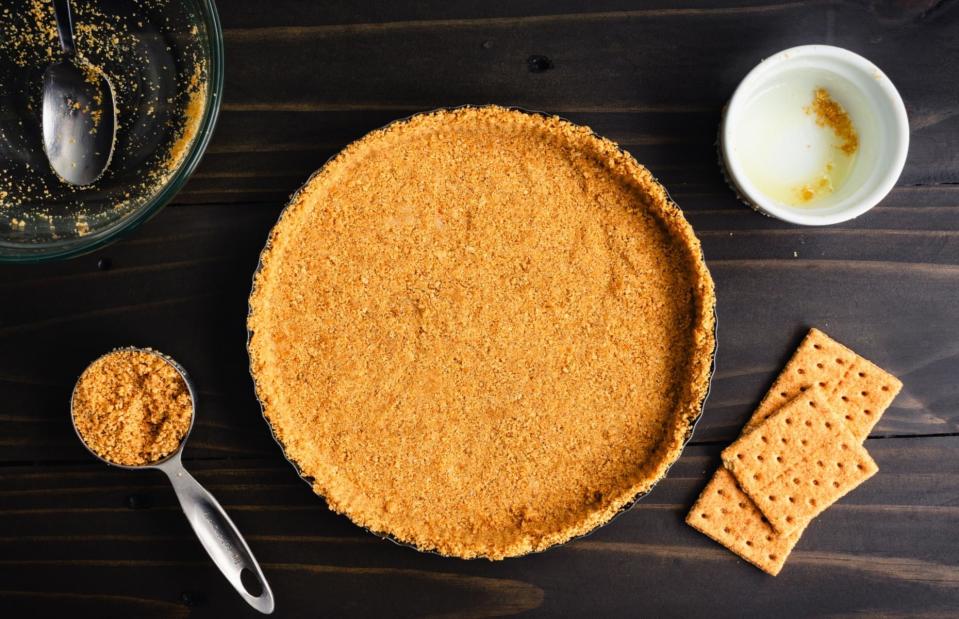
Candice Bell/Shutterstock
This gooey, super-sweet banana and toffee pie was invented at the Hungry Monk restaurant in East Sussex, England back in the 1970s. A hit with all ages, it's very easy to make, with just a few ingredients; a buttery biscuit base is filled with caramel and sliced bananas, then topped with whipped cream and chocolate shavings. The original recipe involved making caramel from scratch by combining sugar, butter and condensed milk, but these days it's far easier (and quicker) to use a can of caramel or dulce de leche. You could even give the pie a modern twist by adding a pinch of sea salt to the caramel to cut through the sweetness.
17. Banoffee pie
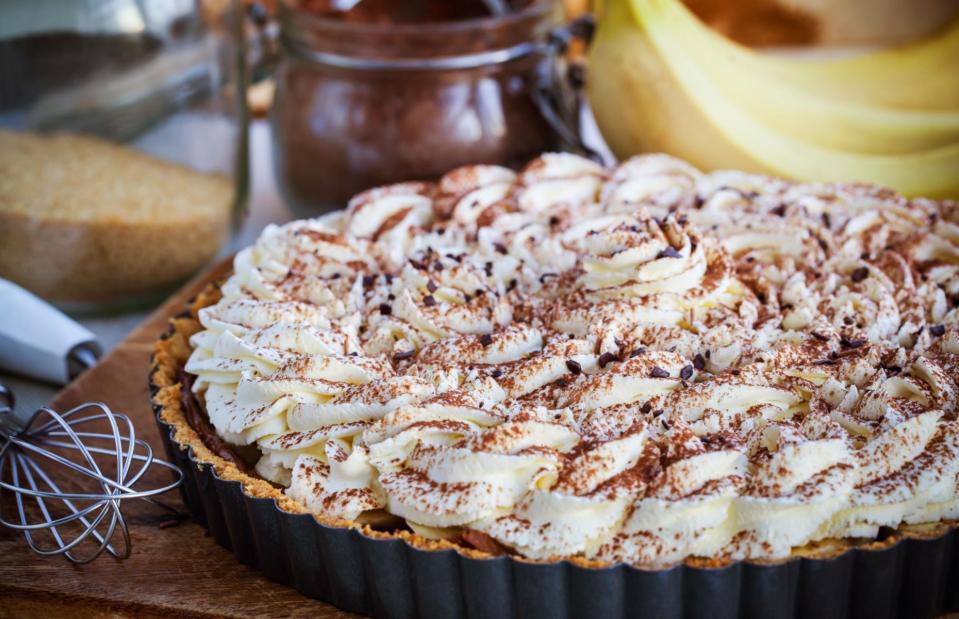
Katty S/Shutterstock
Mix 8oz (225g) crushed digestive biscuits with 5oz (150g) melted butter, then use the mixture to line the base and sides of a 9in (23cm) fluted flan tin. Allow it to chill in the fridge for an hour. Stir 14oz (400g) tinned caramel to loosen it, then spread it over the biscuit base. Slice three bananas and arrange them over the caramel, then pop the whole thing back into the fridge while you whip 10fl oz (300ml) double cream with 1 tbsp icing sugar. Cover the pie with the cream, then grate over some dark chocolate to finish.
16. Quiche Lorraine
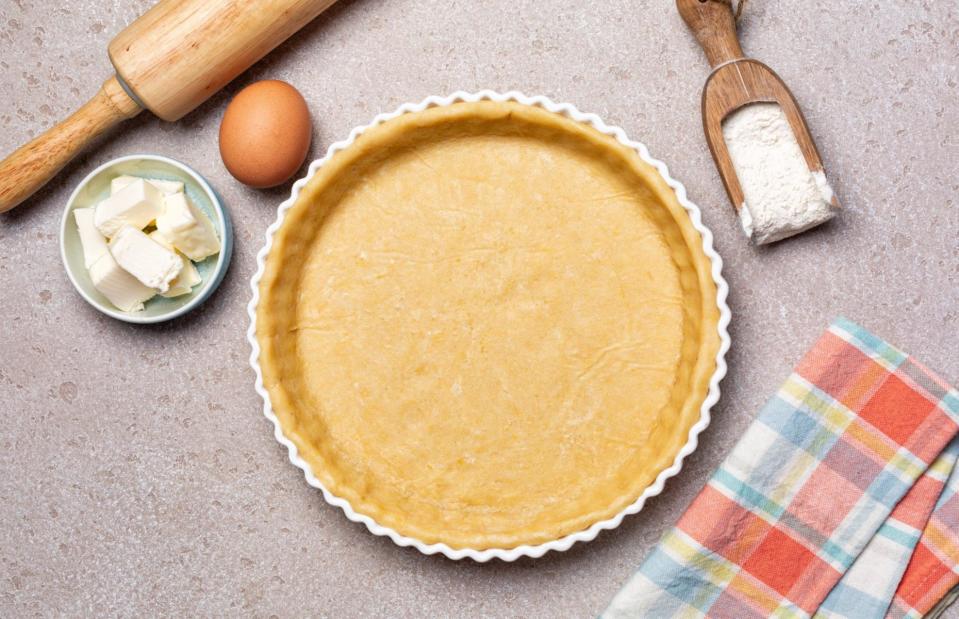
OlgaBombologna/Shutterstock
Chef, author and TV personality Julia Child made French cooking accessible to American audiences back in the 1960s via her TV show The French Chef. A cookbook soon followed, and voilà – quiche Lorraine became hugely popular. This classic dish is very simple, consisting of an open pie crust filled with eggs, cream, bacon lardons and Gruyère cheese. It can be served hot or at room temperature but, traditionally, never straight from the fridge. It's always a crowd-pleaser and homemade versions beat anything you could buy from a shop.
16. Quiche Lorraine
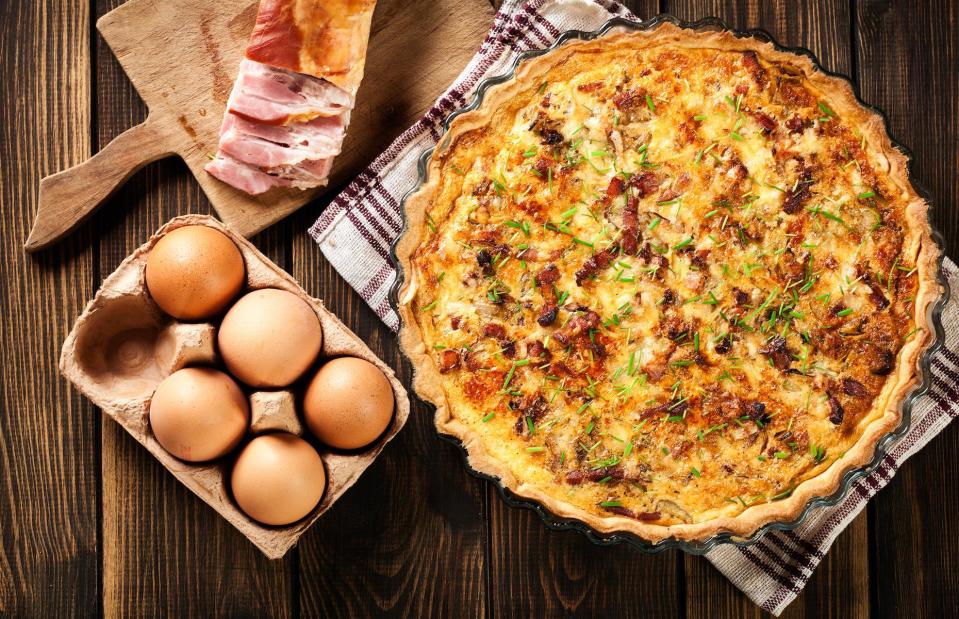
Sławomir Fajer/Shutterstock
To serve eight, use 9oz (250g) shortcrust pastry to line a buttered, loose-based 8in (20cm) flan tin. Chill for 30 minutes, then blind bake in the oven at 220°C/200°C/425°F/gas mark 7 for 20 minutes. Reduce the oven to 180°C/160°C/350°F/gas mark 4. Fry 6oz (175g) smoked bacon lardons until crisp, drain on kitchen paper, then scatter over the pastry base, adding 4oz (125g) grated Gruyère. Whisk together two large eggs with 9oz (250g) crème fraîche and season well. Pour into the pastry case and bake for 25 minutes, until just set and browned.
15. Potato pancakes

Gorbacheva_jul/Shutterstock
Simple yet delicious, potato pancakes have many names around the world – from Jewish latkes to German kartoffelpuffer and Polish placki ziemniaczane. To make them, potato is either grated or mashed, mixed with ingredients such as onion, egg, flour and various seasonings, then shallow fried, resulting in hot, crispy morsels that pair perfectly with all sorts of toppings and condiments. They can be a good way of using up leftover mashed potatoes, but our recipe uses grated potatoes for added crunch.
15. Potato pancakes

irina2511/Shutterstock
To make around eight pancakes, peel and grate 1lb (450g) potatoes. Place the grated potatoes in a clean cloth and squeeze out as much of the moisture as you can (you don’t want your mixture to be too wet). Grate half a medium onion, then add it to the potatoes with an egg, salt and pepper, and a tablespoon of flour. Heat a large frying pan with vegetable oil over a medium-high heat, then drop large spoonfuls of the mixture into the oil, flattening with the back of a spoon. Fry the pancakes for five minutes on each side, until crispy. When they're ready, serve them with sour cream or apple sauce, or top with an egg.
14. Waldorf salad
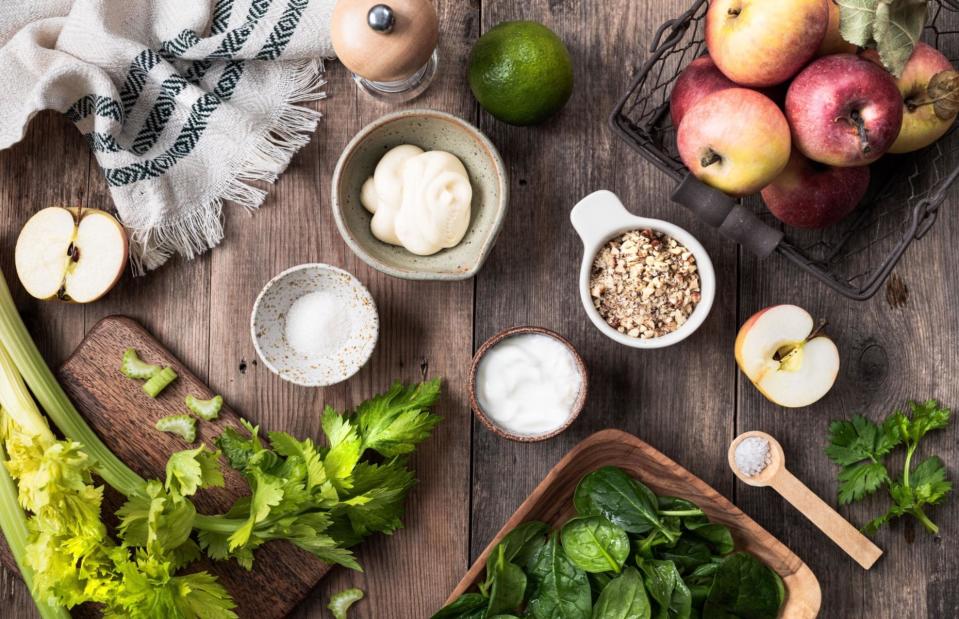
Karina Klachuk/Shutterstock
An American classic, the Waldorf salad was created for a charity ball in 1893 by Oscar Tschirky, the maître d'hôtel of the Waldorf Astoria in New York. It was quick and easy to assemble; its original incarnation consisted simply of chopped apples and celery mixed into a mayonnaise dressing. It's still served at the hotel, though these days the mayonnaise has been replaced with a mixture of crème fraîche, yoghurt, lemon juice and walnut oil. The apples and celery remain, alongside some modern additions: toasted walnuts, grapes, black truffle and microgreens.
14. Waldorf salad
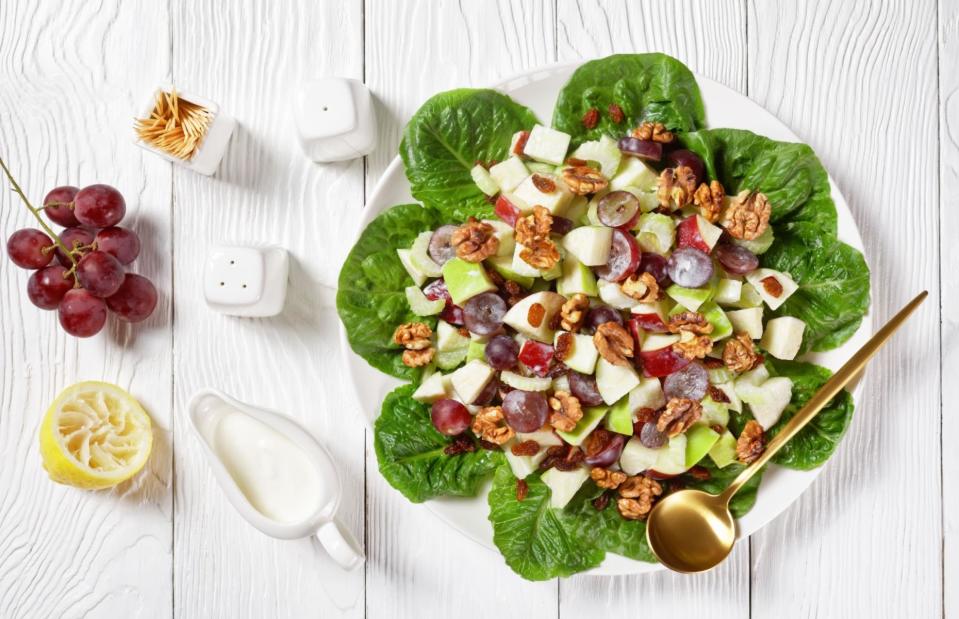
from my point of view/Shutterstock
We've made a few tweaks to Tschirky's original recipe to bring this fresh, crunchy salad up to date. First, core two sharp apples and cut into matchsticks. Halve a handful of grapes, then mix them with 2oz (60g) chopped toasted walnuts. For the dressing, combine 3.5oz (100g) mayonnaise with 2 tbsp thick yoghurt and a squeeze of lemon juice. Peel two sticks of celery to get rid of the strings, then finely chop. Mix the apple, celery, grapes and walnuts, toss them in the dressing, pile them onto a bed of salad leaves, then drizzle with a little walnut oil. This will make enough for a side salad for four – but to make it more substantial, add some shredded chicken or turkey.
13. Spaghetti casserole
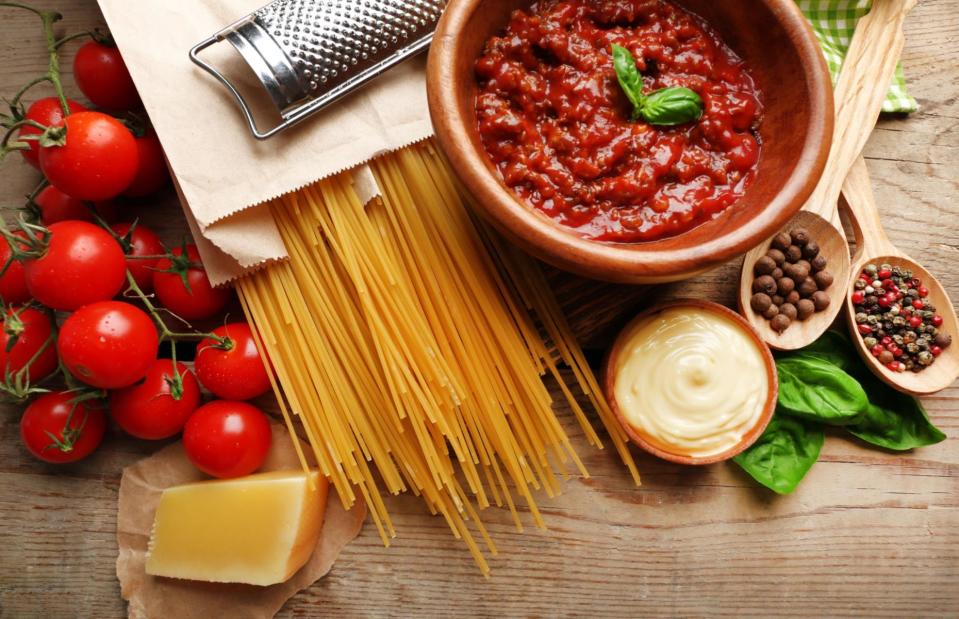
Africa Studio/Shutterstock
In the 1950s, cookbooks and women's magazines were packed with thrifty, freezer-friendly family recipes – many of which used leftovers in new and interesting ways. This easy casserole was a firm favourite, consisting of cooked spaghetti mixed with a sauce of minced beef, condensed tomato soup, vegetables and grated cheese. Back in the 1950s, the only dried pasta readily available was either spaghetti or macaroni, though today you could try using rigatoni or fusilli instead. To serve six, fry off 1lb (450g) minced beef with an onion until browned. Add a can of chopped tomatoes and a 14oz (400g) jar of tomato-based pasta sauce, along with a few teaspoons of dried oregano or Italian seasoning. Mix well.
13. Spaghetti casserole
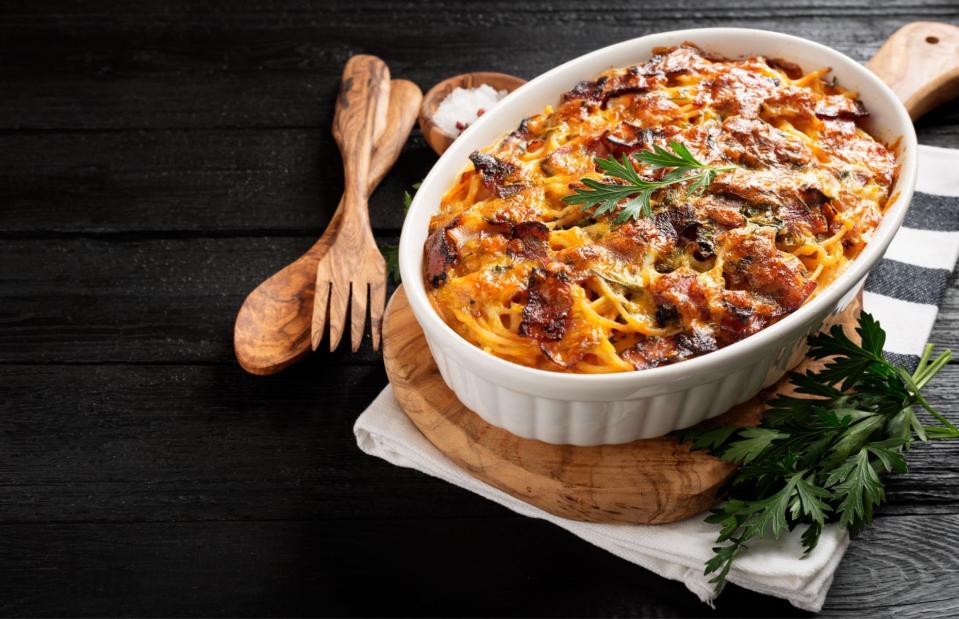
nelea33/Shutterstock
Cook 8oz (225g) spaghetti for a few minutes less than the usual cooking time, then drain and toss in olive oil. Heat the oven to 180ºC/160ºC fan/350ºF/gas mark 4. Oil a large baking dish, put half the spaghetti into the bottom, add half the meat sauce, then spoon on dollops of ricotta cheese (around 9oz/250g). Add 4oz (125g) grated mozzarella, then the remaining spaghetti and meat sauce. Top with a further 4oz (125g) grated mozzarella and a few tablespoons of grated Parmesan. Cover with oiled foil and bake for 40 minutes, then uncover and bake for a further 10 minutes. Allow to rest for five minutes before serving.
12. Steak Diane
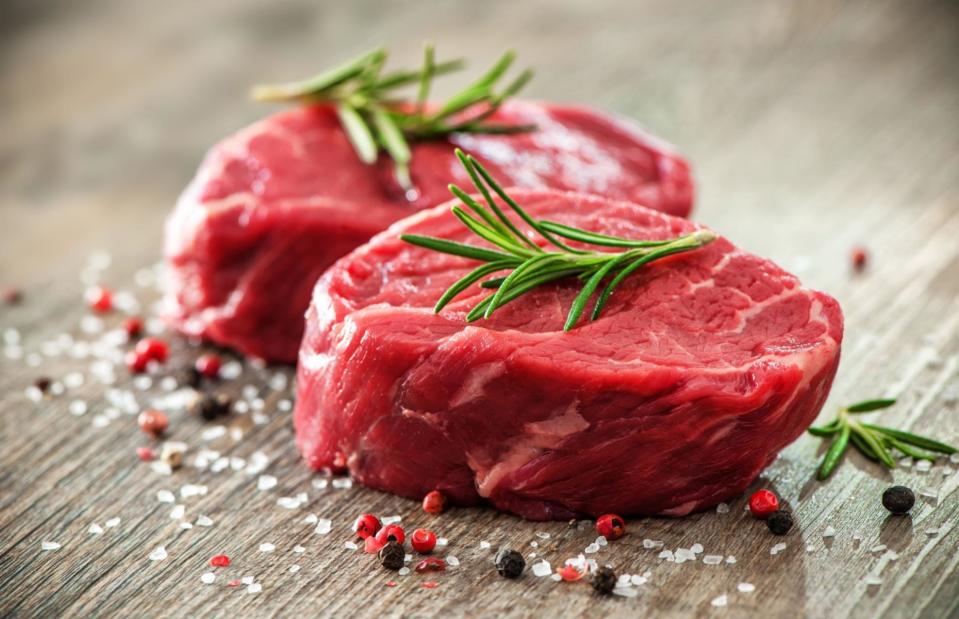
Alexander Rates/Shutterstock
Steak Diane – fillet steak cooked in butter, then served with a cream sauce flavoured with mustard and Worcestershire sauce – epitomised glamorous restaurant dining in the 1950s and 1960s, when it was flambéed with brandy at the table. The origins of the dish may lie in London or New York, though we can say for sure that it was inspired by classic French cooking. It fell out of fashion in the 1970s, but we think it'd still make the perfect date-night dinner for two; it's quick to make and would be lovely with sautéed potatoes (or even oven chips, if you're short on time).
12. Steak Diane
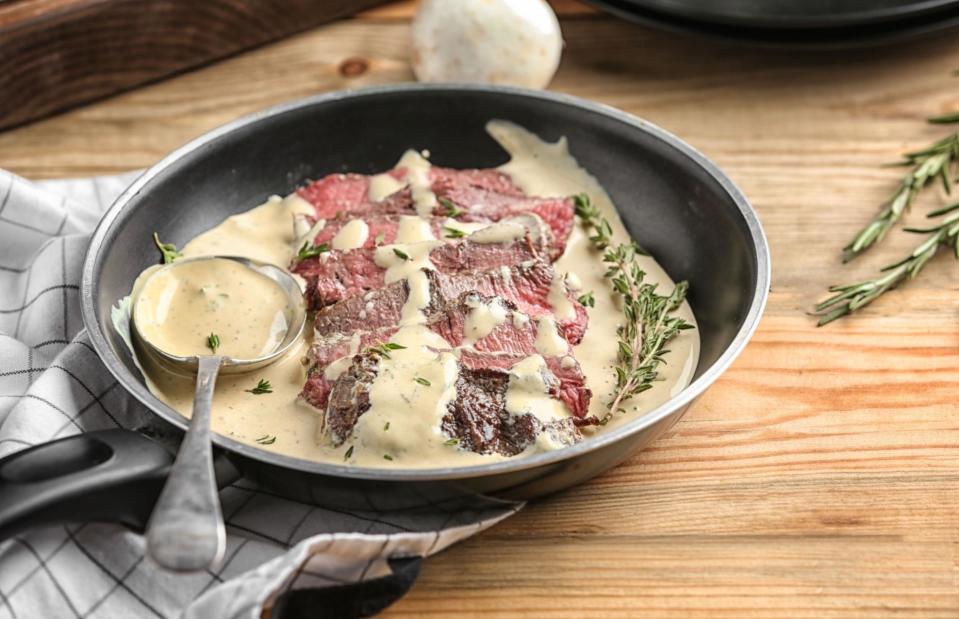
Africa Studio/Shutterstock
Season two fillet steaks with sea salt, then cook them in foaming butter (around 2 tbsp) over a medium-high heat, turning every minute to build up an even crust (allow eight minutes for rare steaks). Set aside on a plate, then add cracked black pepper and one finely chopped shallot to the pan. Cook for a few minutes, then add 2 tbsp of brandy; allow it to bubble to burn off the alcohol. Lower the heat and add 2 tsp Dijon mustard, 1 tsp Worcestershire sauce and 7fl oz (200ml) strong beef stock. Reduce by half, stir in 3 tbsp crème fraîche, and simmer until creamy. Return the steaks and any juices to the pan, spooning the sauce over the top. Serve immediately, with the side dish of your choice.
11. Charlotte aux fraises

Agnes Kantaruk/Shutterstock
Ladyfingers feature in a few classic recipes, including British trifle and Italian tiramisù. This French strawberry cake with Bavarian cream is another retro dessert that uses the little sponge fingers to create something that looks impressive but actually doesn’t require much effort at all. If you want to challenge yourself a little more, you could make your own ladyfingers, but our recipe uses them straight from a packet for ease. To make a strawberry Bavarian cream (bavarois), blend 200g strawberries, then push them through a sieve to remove the seeds. Mix with 1 tsp vanilla paste in a small saucepan, then cook on low heat.
11. Charlotte aux fraises

Legrit/Shutterstock
Use a separate bowl to whisk three egg yolks with 1.8oz (50g) caster sugar, then add the mixture to the strawberry juice when it’s simmering. Keep stirring until it starts to thicken, then remove it from the heat. Combine 1 tbsp gelatine powder with a little cold water, then whisk it into the strawberry mixture. Cover and refrigerate. When the mixture has cooled to room temperature, whisk 8.5fl oz (350ml) thickened cream until nearly stiff, gently folding it into the strawberry. In a springform tin, create a base layer of ladyfingers, placing more around the edge. Pour in half the cream, then cover with diced strawberries, followed by the rest of the cream. Decorate with more strawberries, then refrigerate for two to three hours until set.
10. Beef Stroganoff
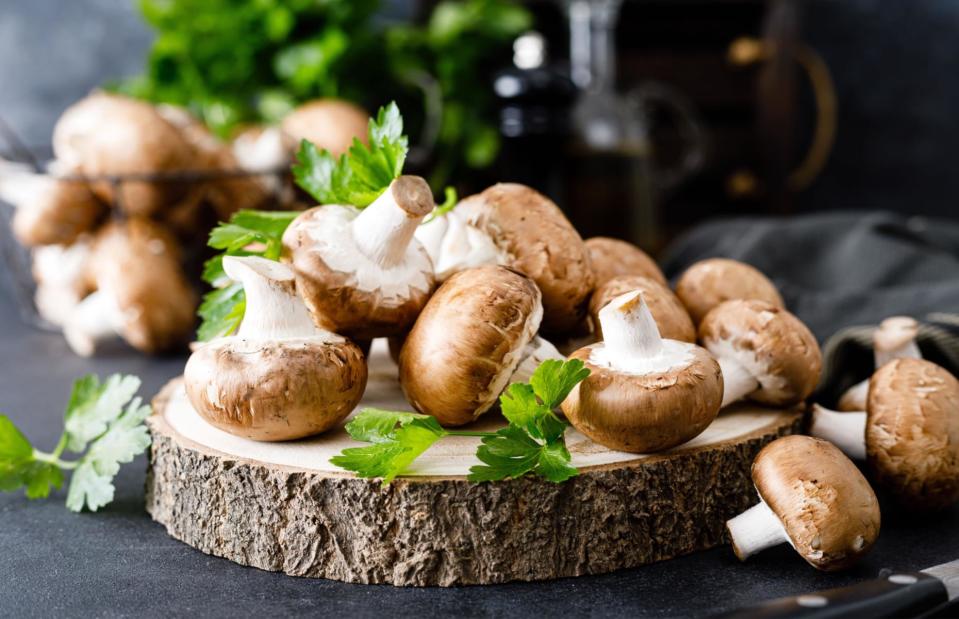
Sea Wave/Shutterstock
Countless beef Stroganoffs were served at dinner parties in the 1970s – but did you know that this classic dish was named after Russian nobleman Count Pavel Stroganoff, and invented by his French chef in the 19th century? The 1970s version was often made by coating strips of beef in mushroom soup straight from a can and, invariably, the beef was overcooked until chewy. However, properly made with good ingredients (and no canned soup!), this dish is still a winner, especially served with buttered tagliatelle or creamy mashed potatoes.
10. Beef Stroganoff
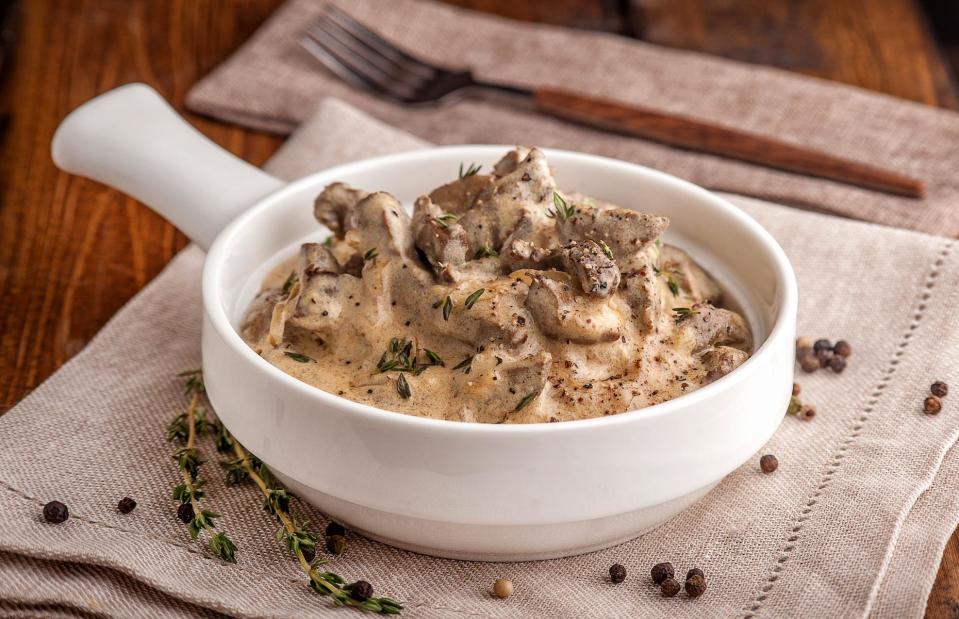
valkyrielynn/Shutterstock
To serve four, melt a large knob of butter in a frying pan, then cook a finely chopped onion and 9oz (250g) sliced mushrooms over a medium heat until browned. Remove and set aside, then add 1lb (450g) fillet or sirloin steak strips to the pan and cook for a few minutes. Add 4 tbsp brandy or white wine, then cook for a further minute. Return the mushrooms and onions to the pan, add 4fl oz (125ml) beef stock and cook until it starts to bubble. Stir in 8fl oz (250ml) sour cream, season well and serve piping hot.
9. Peach Melba
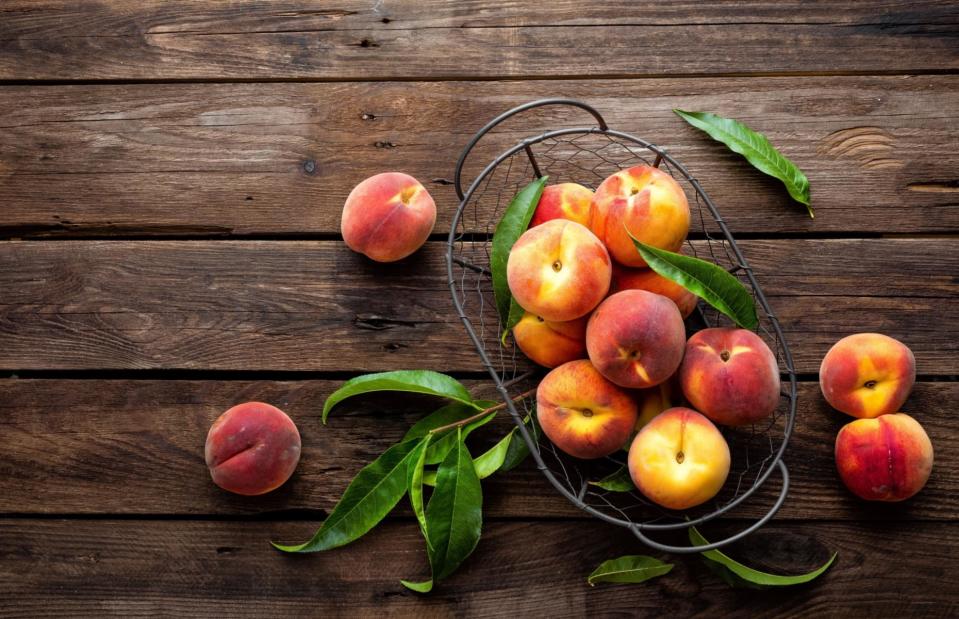
Sea Wave/Shutterstock
This elegant yet simple dessert was created by world-renowned chef Auguste Escoffier at The Savoy Hotel in 1893 – and it was named after Australian opera star Dame Nellie Melba, who was staying at the hotel while performing at the Royal Opera House. It's surprisingly simple to make: poached peaches are covered in a vibrant raspberry sauce, then served with ice cream. Peach Melba was often featured on restaurant menus in the 1950s and 1960s, when it was mostly made with tinned peaches; however, it's a lovely dessert to make when fresh peaches are in season. Poaching peaches intensifies their flavour (and it's also handy if they're a little on the hard side).
9. Peach Melba
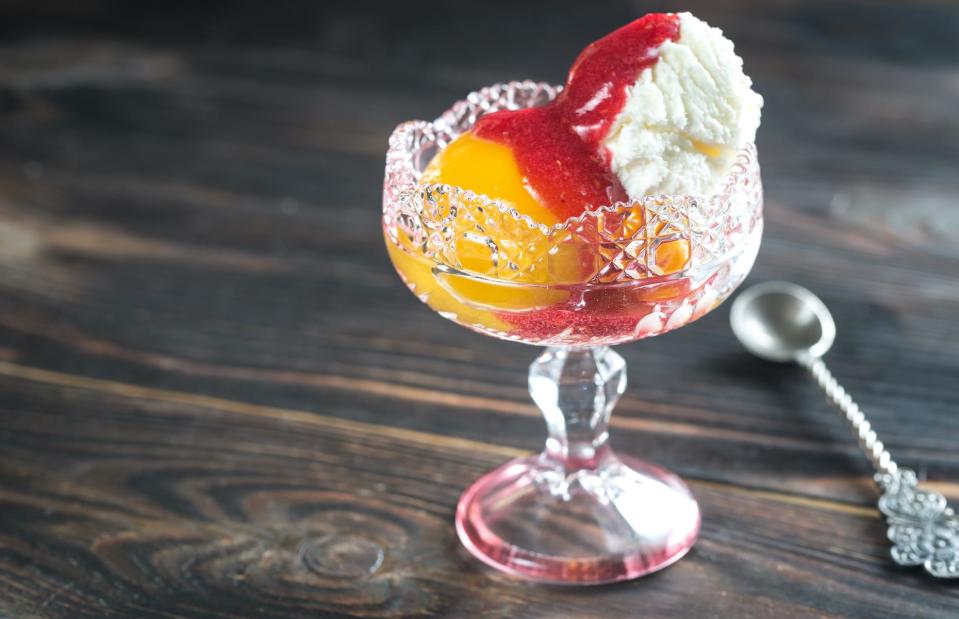
Alexander Propenko/Shutterstock
To serve four, first make a sugar syrup in a large, shallow pan, using 12oz (350g) caster sugar and 12fl oz (350ml) water. Allow the sugar to dissolve gently, then leave it to bubble for about five minutes. Add four halved peaches (you can take out the stones later) and poach for about three minutes on each side. Remove the peaches, then take off the skins. For the raspberry sauce, whiz up 7oz (200g) raspberries with 1 tbsp icing sugar in a blender, then push the mixture through a sieve to remove the seeds. Put two peach halves in a dish, top with a little sauce and add a scoop of ice cream. Any remaining sauce can be served separately.
8. Cabbage rolls

Cherries/Shutterstock
Traditional throughout much of Europe, as well as parts of Asia and Africa, cabbage rolls can be filled with all sorts of delights. Although they're a little out of fashion in some places today, cabbage rolls are still tasty – and there are plenty of different ways to make them. This recipe is for Polish gołąbki. To make them, cut the leaves from a white cabbage, then cook them in boiling, salted water for one to two minutes. Remove from the pot, keeping the cooking water and setting aside the smaller leaves. Cook 300g dried rice according to the packet instructions, then drain well, so it’s as dry as you can get it.
8. Cabbage rolls

Paulo Vilela/Shutterstock
Fry a finely chopped onion until softened, then mix it with the rice, 1lb 10oz (750g) pork mince, an egg and a pinch of dried marjoram. Lay out each cabbage leaf, fill with the stuffing, then roll up tightly. Lay the smaller cabbage leaves across the bottom of a deep, wide pan, then pack the cabbage rolls over the top. Cover with a sauce made with 7oz (200g) tomato purée, salt and pepper, and some reserved cabbage water, ensuring the sauce is an inch or so (a couple of centimetres) above the rolls. Cover and simmer for two hours, then serve the rolls with the tomato sauce drizzled over the top.
7. Vol-au-vents
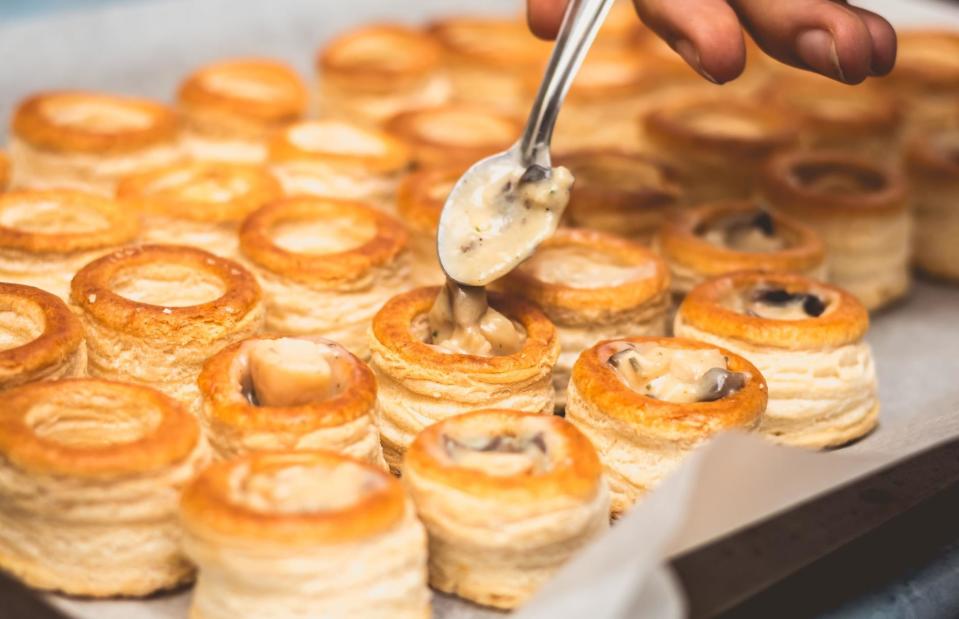
Pierre-Olivier/Shutterstock
No 1960s party would be complete without a tray of these puff pastry snacks – served hot or cold, and often filled with coronation chicken (or even condensed mushroom soup). Vol-au-vent literally means 'wind-blown' in French, and the name refers to the lightness of the pastry. Back in the day, you'd find the pastry cases in the freezer aisle, but now they're trickier to track down. Fortunately, they're easy to make from scratch at home. Use all-butter pastry for the best results, and try fillings like flakes of hot smoked salmon mixed with mayo and horseradish, or mushrooms sautéed with garlic and crème fraîche.
7. Vol-au-vents
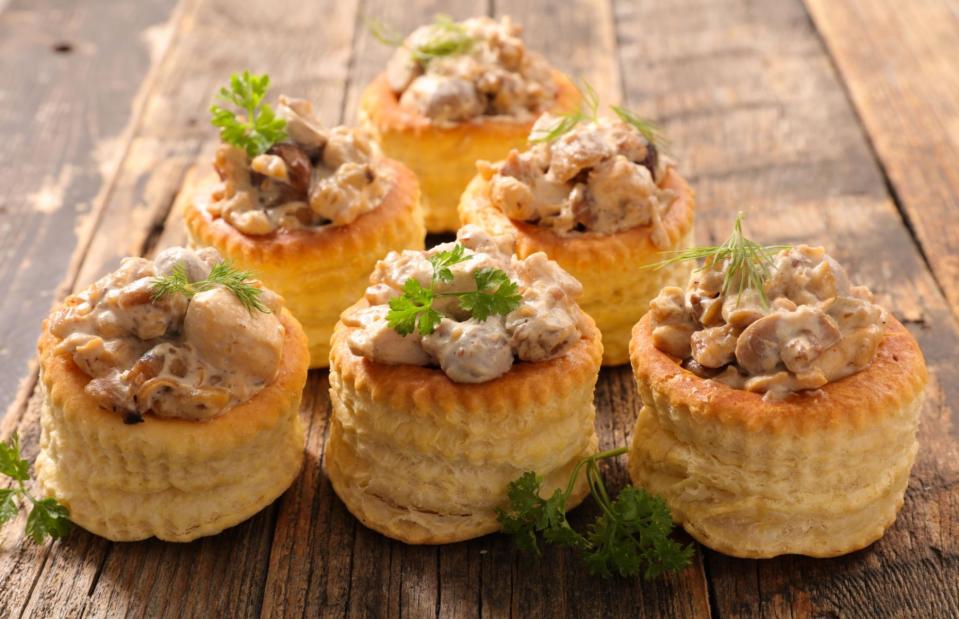
margouillat photo/Shutterstock
To make six vol-au-vents, you'll need 8oz (225g) pastry. Cut out 12 circles, measuring 3in (7.5cm) in diameter, with a floured cutter. Put six of the circles on a dampened baking sheet (this will help them rise); then, cut out the centres from the other six with a smaller cutter to form rings. Put the rings on top of each circle, press down slightly, brush them with milk or beaten egg yolk, then pop them in the fridge to chill for about 15 minutes. Bake in a very hot oven (220ºC/200ºC fan/450ºF/gas mark 9) for 15 minutes, then reduce the temperature to 200ºC/180ºC fan/400ºF/gas mark 6 for 10 minutes, until the vol-au-vents are browned and crisp. You could also bake the cut-out circles to make lids.
6. Duck à l'orange
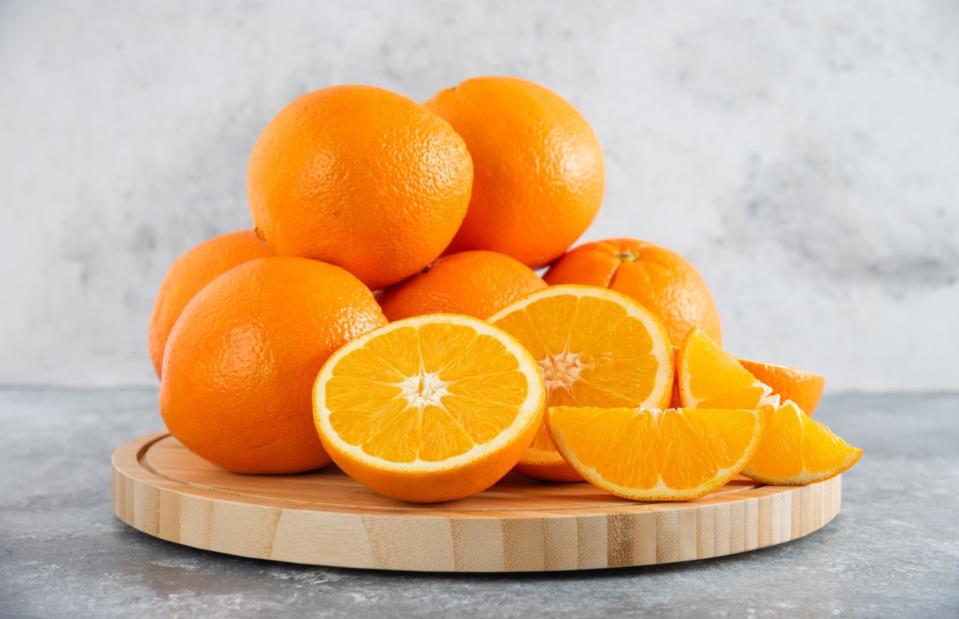
azerijan_stockers/Shutterstock
Legend has it that when Catherine de Medici married the Duke of Orléans back in the 16th century, her Italian chefs took this recipe with them to the French court. Yet again, it took American TV chef Julia Child to bring this classic dish back to life – and it became a staple dinner party and restaurant dish in the 1960s. Duck's a fatty, slightly gamey meat, so pairing it with tart, sharp oranges makes for a perfect flavour combination. The original recipe involves roasting and jointing a whole duck, but we've adapted it to make an easy dish for two.
6. Duck à l'orange
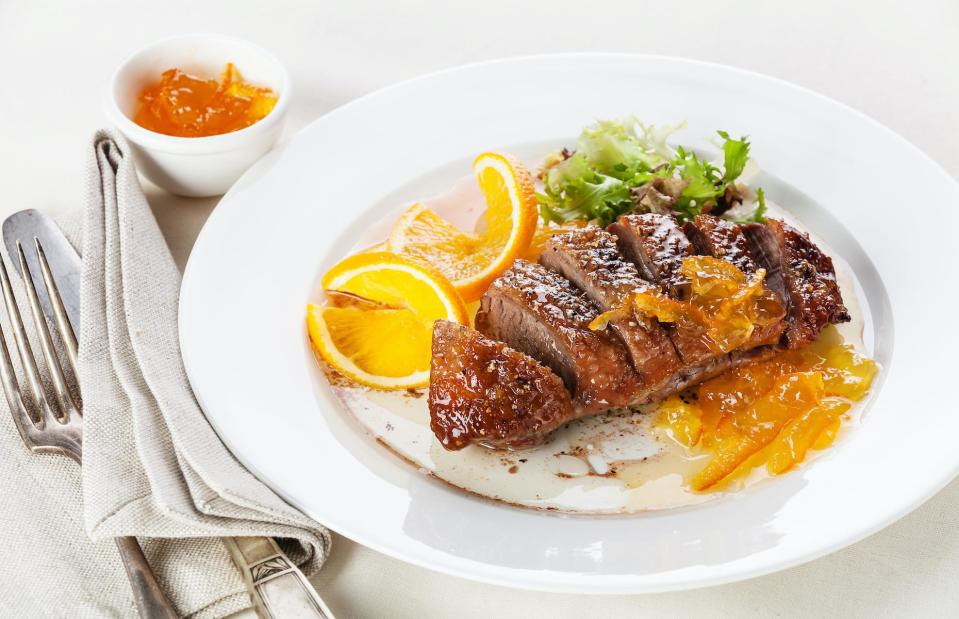
Natalia Lisovskaya/Shutterstock
Slash the skin side of two duck breasts, sprinkle with sea salt, then roast in a very hot oven, skin-side up, for 20 minutes. Meanwhile, for the sauce, take a tablespoon of duck fat from the roasting tin, then fry a large, chopped shallot until softened. Add 2 tbsp orange liqueur (such as Grand Marnier or Cointreau) and 3 tbsp red wine to the pan, let it bubble for a few seconds, then add the juice of an orange and 3 tbsp water. Stir in 2 tbsp good-quality orange marmalade and a sprinkle of orange zest. If you prefer a thick sauce, mix 1 tsp cornflour with a little water, add it to the pan, then stir until thickened. Serve with roast potatoes, with the sauce poured around the duck breasts.
5. Cheese fondue
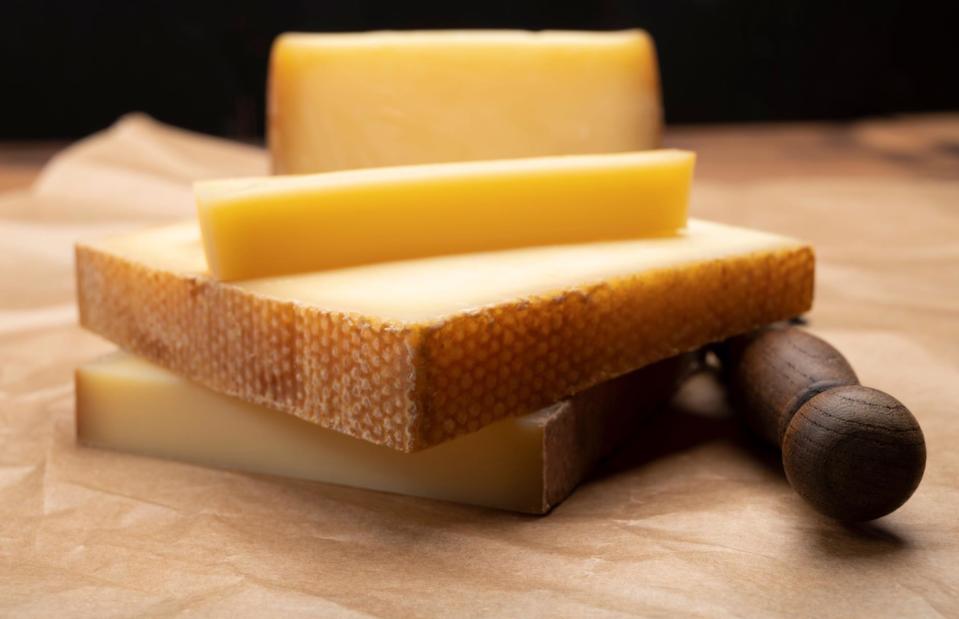
barmalini/Shutterstock
The concept of fondue has been around for centuries, but the bubbling pan of hot, melty cheese as we know it today was actually the brainchild of the Swiss Cheese Union, which used it as a marketing tool to get people to eat more Swiss cheese in the mid-20th century. Needless to say, it worked! Fondue sets were all the rage in the 1970s, but since then, they've drifted out of fashion. We think it's time to give fondue another go; it's the perfect communal dish to dig into when you have friends around for dinner. If you don't have a fondue set, a portable camping stove will do the job – though long forks or skewers are essential.
5. Cheese fondue
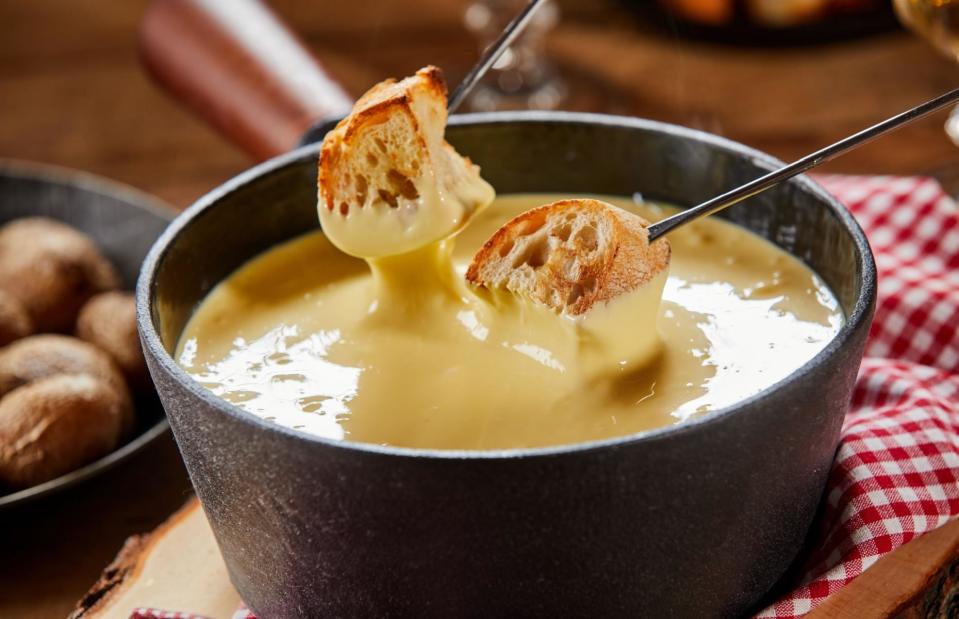
stockcreations/Shutterstock
Our recipe serves six. To start, rub the base of a pan with a cut clove of garlic. Add 12fl oz (350ml) dry white wine to the pan and heat gently until simmering. Next, mix 10oz (300g) grated Gruyère with 2 tsp cornflour. Add the mixture to the pan a little at a time, stirring gently. Once the first batch has melted, add another handful, and keep going until all the cheese has been incorporated. Give your fondue the traditional finish by adding a small glass of Kirsch, then you're ready to dip. Go classic with cubes of slightly stale baguette or try dipping mini roast potatoes.
4. Falscher hase

Mironov Vladimir/Shutterstock
This old-school German favourite is something many outside of Germany will recognise in one form or another, too – essentially, it's a meatloaf. This particular meatloaf features a secret boiled egg centre, although some recipes leave this part out. Made from minced meat and wrapped in bacon, this dish came to prominence after the Second World War, when rabbit meat was still too expensive for many households (hence its name, which translates into English as 'fake rabbit'). Sometimes meatloaf is made in loaf pans; however, to make falscher hase, you’ll want to use a large, shallow pan.
4. Falscher hase

OlgaBombologna/Shutterstock
Preheat your oven to 190°C/170°C fan/375°F/gas mark 5. Mix 2lb (900g) minced beef (or 1lb (450g) each pork and beef mince), two large eggs, a finely chopped onion, 2 tbsp breadcrumbs, a couple of teaspoons of salt and 1/2 tsp black pepper. If you want to put eggs inside, boil and peel three eggs, placing them on a layer of the meat mixture and shaping the rest of the meat around them. If not, simply shape the meat into a loaf. Place in your pan, lay strips of bacon on top and bake for 50-60 minutes until cooked through. Leave the meatloaf to stand for 10 minutes, before slicing and serving with potato salad and peas.
3. Banana split
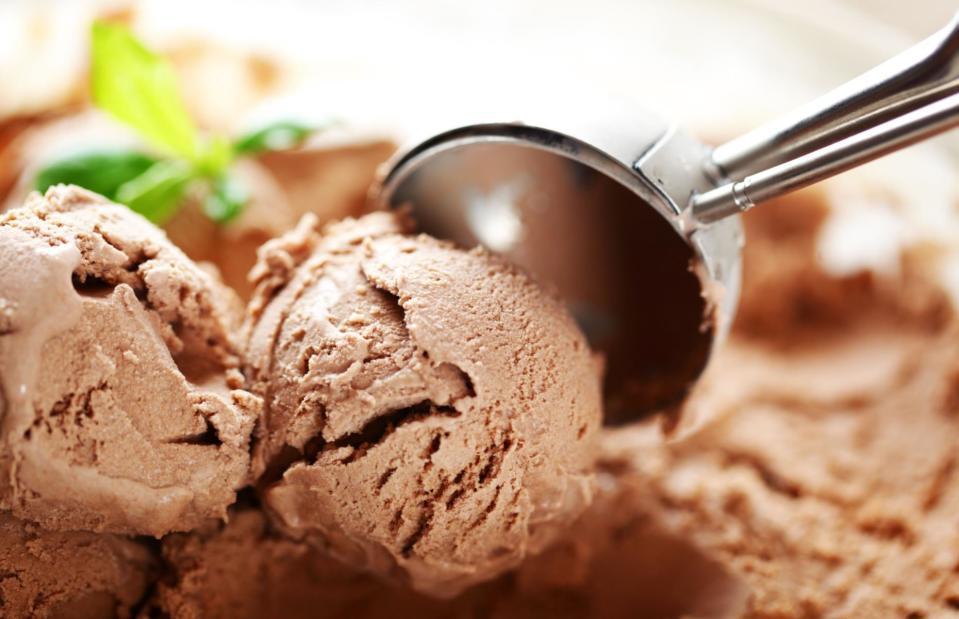
Zadorozhyni Viktor/Shutterstock
Though a few cities in the US claim to have invented the banana split, only Wilmington, Ohio hosts an annual banana split festival. This iconic dessert was a fixture of menus at soda fountains and Wimpy Bars in the 1950s but, sadly, it's fallen out of fashion since then. It's a quick and easy dessert to make, with no cooking required (unless you fancy making your own chocolate sauce, that is). We think it's still a classic – and we guarantee the kids will love it.
3. Banana split
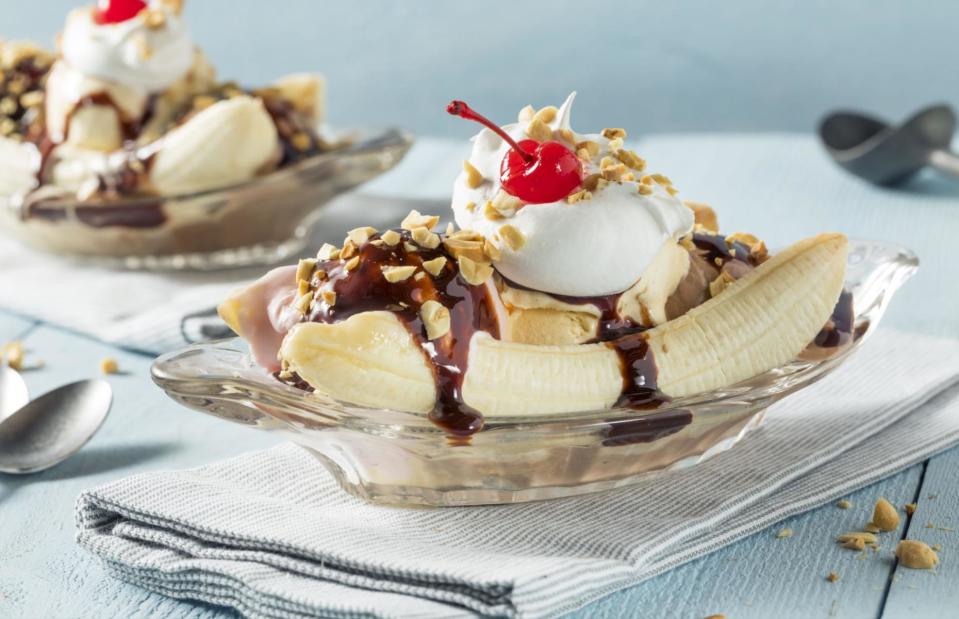
Brent Hofacker/Shutterstock
Make sure you have ripe bananas – if they're a little under-ripe, they'll be starchy, rather than sweet. Simply split a banana lengthways, add a scoop each of chocolate, vanilla and strawberry ice cream, then pour over some chocolate or caramel sauce (or an ice cream syrup of your choice). Top your banana split with a spoonful of whipped cream, a sprinkle of chopped nuts and a maraschino cherry.
2. Prawn cocktail
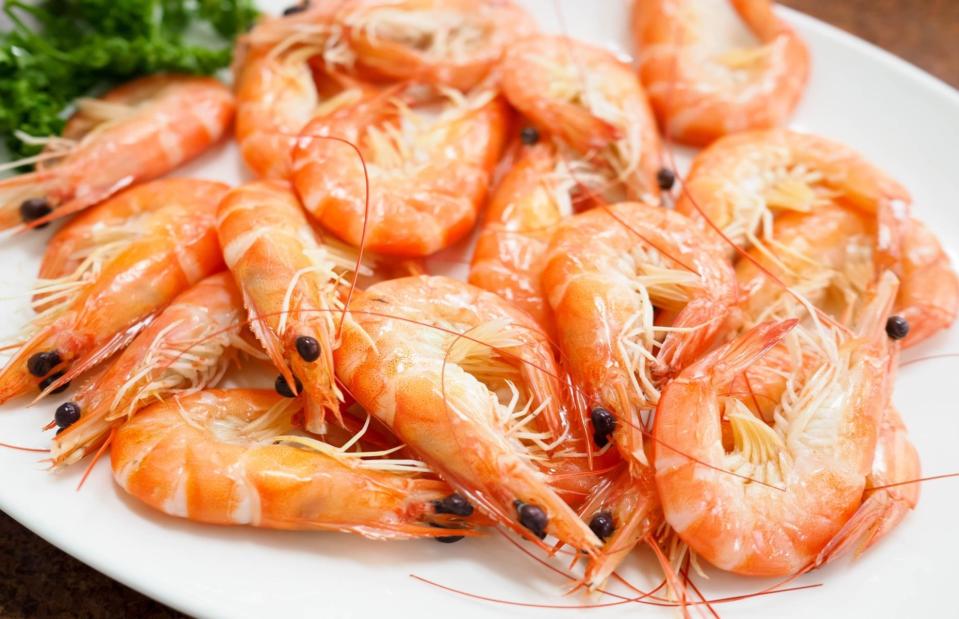
Carlos Huang/Shutterstock
Prawn cocktail – consisting of prawns dressed in Marie Rose sauce and served on a bed of lettuce – was a staple of restaurant and dinner party menus from the 1950s-1970s. Made well, with juicy prawns and crisp, fresh lettuce, we think this starter still has the power to impress. It's all about the sauce, so rather than using a jar, rustle up your own with just a few simple ingredients. As for the prawns, try using Atlantic shrimp; small, sweet and slightly salty, they're packed with flavour.
2. Prawn cocktail
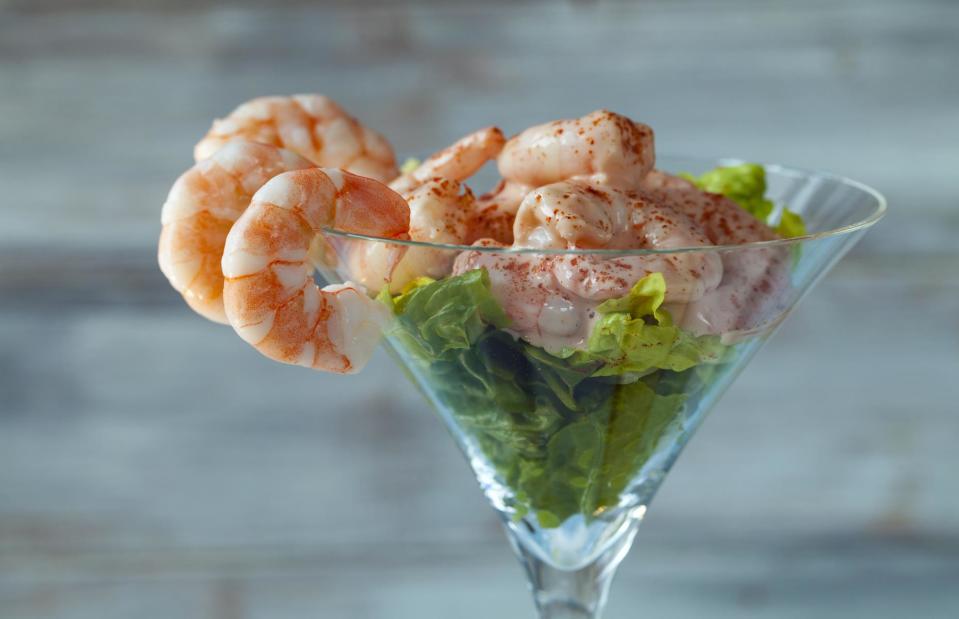
Magdanatka/Shutterstock
Keep it retro by serving this old-school starter in cocktail or Martini glasses. For two people, you'll need 9oz (250g) fresh, juicy prawns. For the sauce, simply mix together 4 tbsp good-quality mayonnaise with 1 tbsp tomato ketchup, then add a few shakes of Tabasco sauce, a squeeze of lemon juice and a good pinch of paprika. Shred a gem lettuce and divide it between the glasses, then toss the prawns in the sauce and pile them on top, adding a sprinkling of paprika. Pop a wedge of lemon on the side of the glass, and there you have it!
1. Pineapple upside-down cake
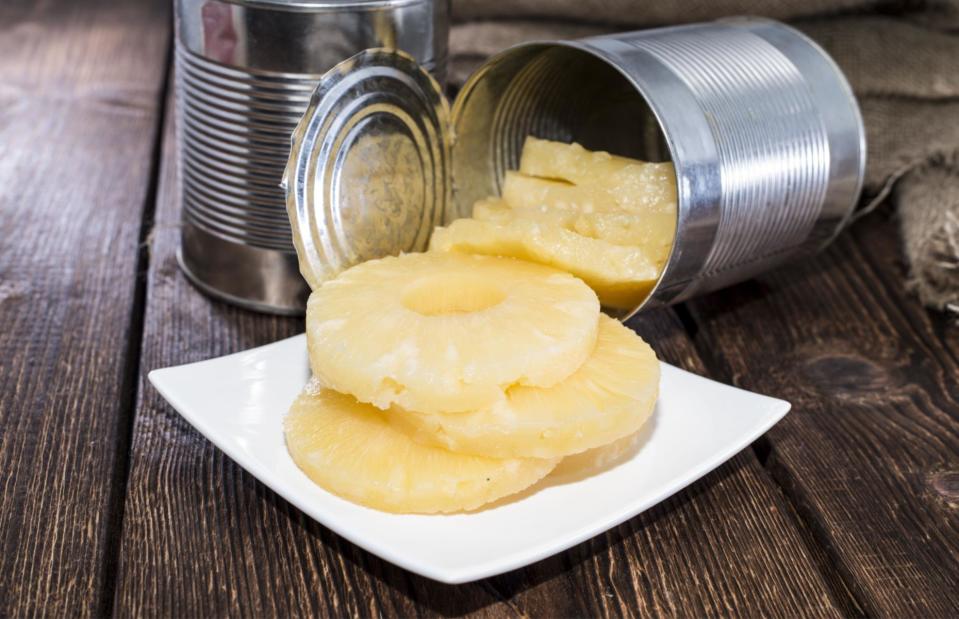
HandmadePictures/Shutterstock
In the 1920s, tinned fruit had just been introduced – and it was the height of fashion. The Dole fruit and vegetable company, which still produces tinned fruit to this day, launched a competition to highlight different ways of using its tinned pineapple, and the pineapple upside-down cake was born. It may be a throwback to tinned fruit's heyday, but we think it's tasty enough to make a comeback (just remember to use tinned pineapple in fruit juice rather than syrup for a better flavour). For our recipe, you'll need a buttered tin without a loose base; we used a tin 8 in (20 cm) at the base and around 9 in (24.5 cm) at the top.
1. Pineapple upside-down cake

nelea33/Shutterstock
Using an electric mixer, whisk 6oz (175g) each soft butter and light brown sugar until pale and fluffy. Add three eggs gradually, beating well after each addition. Sift in 7oz (200g) self-raising flour, folding in gently until everything's mixed together. Sprinkle 2 tbsp caster sugar onto the base of the tin, then drain a tin of pineapple. Arrange six to eight pineapple rings on top, adding glacé cherries to the centre of each one. Pour over the batter, then bake at 180ºC/160°C/350ºF/gas mark 4 for 40 minutes, or until a skewer comes out clean. Run a knife around the edge, then invert the cake onto a serving plate or cake stand.
Now discover 41 retro cooking tips that still work a treat today
Last updated by Laura Ellis.


